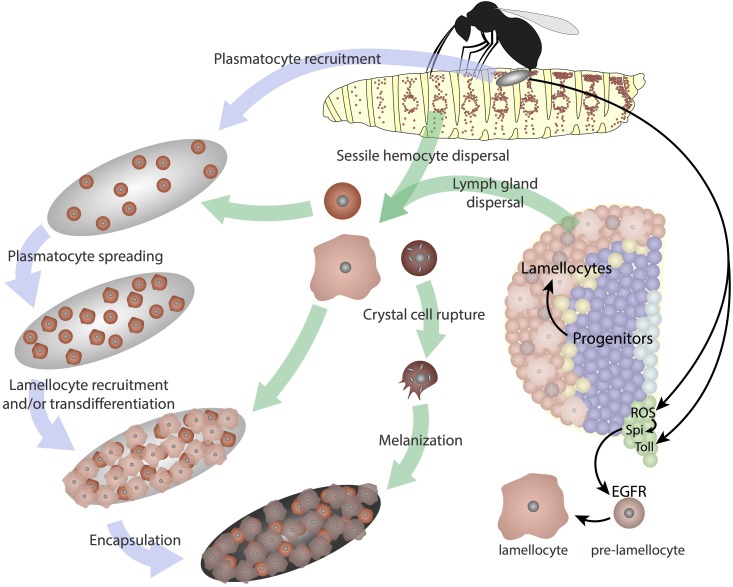Figure 7.
Larval hemocyte response to wasp infestation. Egg deposition beneath the larval cuticle by a parasitic wasp (top right) initiates a systemic signal that increases ROS levels in the cells of the PSC that causes Rhomboid and Spitz (Spi) activation. Secreted Spitz activates EGFR and promotes lamellocyte formation. The lymph gland disperses prematurely, and sessile hemocytes are dislodged from the cuticle and increase the number of mature hemocytes in circulation. Plasmatocytes adhere and spread along the outer shell of the wasp egg. Lamellocytes encapsulate and sequester the plasmatocyte-coated egg. Finally, crystal cell rupture aids in the melanization of the lamellocyte-encapsulated egg. This succession of events allows for the successful neutralization of the parasitic eggs in a fraction of infestation attempts. PSC, posterior signaling center; ROS, reactive oxygen species.

